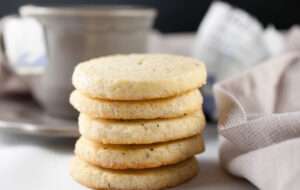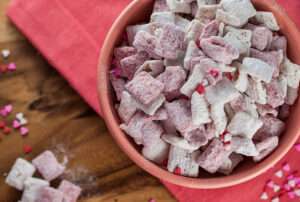Ulavacharu is more than just a dish; it’s a delightful expression of South Indian culinary tradition. Originating from the Telugu states of Andhra Pradesh and Telangana, this thick, horse gram-based soup has warmed hearts and homes for generations. Renowned for its rich flavor and nutritional value, Ulavacharu is often enjoyed with rice or as a soup.
The Essence and Preparation of Ulavacharu
At its core, Ulavacharu is a testament to the ingenious use of local ingredients to create dishes that are both nourishing and flavorful. Horse gram, known as “Ulavalu” in Telugu, is slow-cooked to extract its deep, earthy flavors, resulting in a broth that’s both tangy and slightly sweet, thanks to the addition of tamarind and jaggery. Spices and a tempering of mustard seeds, curry leaves, and asafoetida add layers of complexity to this beloved dish.
Ulavacharu on the Culinary Map
Restaurants like Ulavacharu Indian Restaurant and Ulavacharu Tiffins have brought this traditional dish to the forefront of the Indian culinary scene, especially in places far from its South Indian roots. These eateries offer a taste of home for the diaspora and an exotic culinary adventure for others, serving Ulavacharu in its traditional form or innovatively incorporated into dishes like biryanis.
Nutritional Profile and Health Benefits
Ulavacharu isn’t just cherished for its taste; it’s also packed with health benefits. Horse gram is a powerhouse of protein, fiber, and minerals such as iron, calcium, and molybdenum, making Ulavacharu a nutritious addition to any diet. Its properties have been linked to aiding weight loss, improving digestion, and even reducing cholesterol levels.
Ulavacharu Recipe :
Ingredients:
- 1 kg horse gram (ulavalu)
- 3 liters water (for soaking the lentils)
- 50 grams tamarind (seedless)
- ½ to ¾ cup hot water (for soaking tamarind)
For tempering:
- 1½ to 2 tablespoons oil
- ¾ to 1 teaspoon mustard seeds
- ¾ to 1 teaspoon cumin seeds
- 1 to 2 dried red chili (broken, adjust to taste)
- 8 to 10 small garlic cloves
- 1 to 2 green chilies (adjust to taste, deseed for low heat)
- 1 sprig curry leaves
- 1 small onion (thinly sliced, optional)
- ¼ teaspoon turmeric
- ½ teaspoon red chili powder (adjust to taste)
- ½ teaspoon coriander powder (optional)
- ¾ to 1 teaspoon salt (adjust to taste)
Instructions:
- Preparation:
- Rinse horse gram thoroughly and soak in 3 liters of fresh water overnight, covered with a clean cotton cloth.
- The next day, pressure cook the soaked horse gram with water for 13 minutes in an Instant Pot or until tender in a traditional pressure cooker.
- Strain the cooked horse gram, reserving the stock and separating the lentils.
- Tamarind Preparation:
- While the lentils cook, boil ½ to ¾ cup of water and soak the tamarind. Once cooled, squeeze the pulp well and strain.
- Making the Temper:
- Heat oil in a saucepan and add mustard seeds, cumin seeds, and broken red chili. Once they splutter, add garlic, green chili, curry leaves, and onion. Sauté until aromatic and onions turn transparent.
- Preparing Ulavacharu:
- Pour the strained lentil stock into the tempering. Add turmeric, red chili powder, coriander powder, and mix well.
- Let it boil until the stock reduces to half its volume, then add the thick tamarind paste/pulp and salt to taste.
- Simmer until the Ulavacharu thickens to a desirable consistency, adjusting for salt, spices, and tamarind as needed.
- Serving:
- Serve the hot Ulavacharu topped with butter or cream, alongside plain steamed rice for a fulfilling meal.
Pro Tips:
- Rinsing and soaking the horse gram are crucial steps to remove phytates and improve digestion.
- Use a large enough cooker to prevent overflowing.
- Adding tamarind and salt later in the cooking process ensures the flavors blend well without overpowering.
- Adjust the level of spices according to your taste preference, but be careful not to overpower the dish with coriander powder.
FAQs About Ulavacharu
What is meant by Ulavacharu?
Ulavacharu is a traditional South Indian soup made from horse gram (a type of lentil), tamarind, and a blend of spices and herbs. Originating from the Telugu regions of Andhra Pradesh and Telangana, this hearty soup is known for its rich, tangy flavor and nutritional benefits. Ulavacharu is often served with rice and a dollop of ghee, making it a staple dish in many households and a symbol of Telugu cuisine.
How does Ulavacharu taste?
Ulavacharu has a distinctive taste that combines tanginess from tamarind, a mild sweetness, and a deep, earthy flavor from the horse gram. The addition of spices like mustard seeds, cumin, and green chilies, along with garlic and onions, introduces a spicy and aromatic profile. This unique combination of flavors makes a savory, slightly spicy, and utterly satisfying dish.
Why is Ulavacharu famous?
Ulavacharu is famous for its unique taste, nutritional value, and cultural significance in Andhra Pradesh and Telangana. It’s celebrated as a traditional dish that showcases the culinary richness of South India. The soup’s popularity extends beyond its origins due to its comforting warmth, rich flavors, and health benefits, including high protein and fiber content. Restaurants and home cooks alike cherish Ulavacharu for its authentic taste and the connection it offers to Telugu heritage.
Is Ulavacharu hot or cold?
Ulavacharu is traditionally served hot or warm. The warmth of the soup enhances its flavors and makes it a comforting dish, especially during cooler weather. Serving hot also brings out the aroma of the spices and tamarind, making it a more inviting and satisfying meal. While primarily enjoyed warm, it can be adapted to personal preference.
If you like Asian recipes. I recommend this dish: Donne Biryani Recipe
Ulavacharu is more than just a dish; it’s a culinary heritage that continues to captivate palates across the globe. Whether enjoyed in its traditional form or through contemporary interpretations, Ulavacharu remains a beloved symbol of South Indian cuisine. As it gains popularity in restaurants worldwide, this delicious, nutritious soup offers a taste of India’s rich culinary traditions to everyone willing to explore.
This article aims to provide a comprehensive understanding of Ulavacharu, ensuring readers are left informed and perhaps a bit hungry for a taste of this exquisite dish. Whether you’re a culinary enthusiast or simply curious about Indian cuisine, Ulavacharu is a dish that promises to deliver in terms of flavor, tradition, and health benefits.




